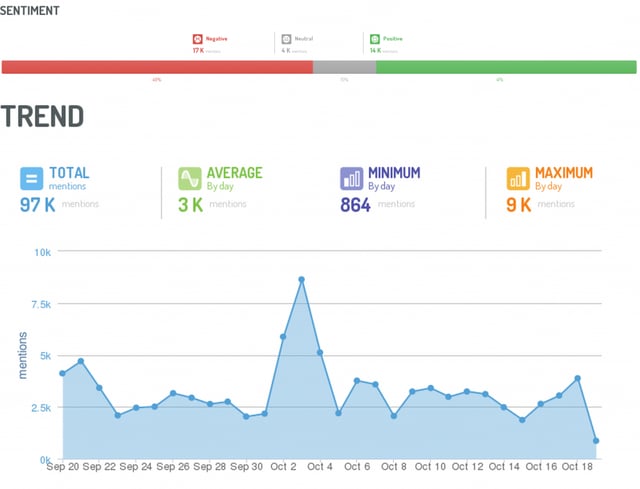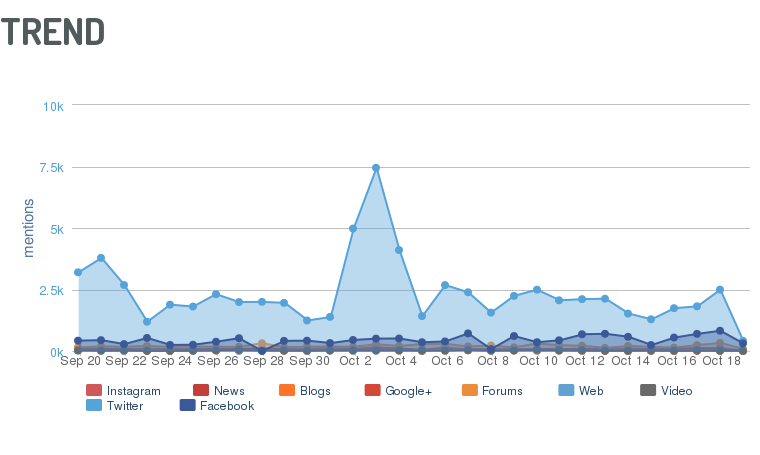Agencies and Competitor Analysis: The Best Data-Driven Techniques
A case study on tracking techniques and best practices for social media analysis.
Competitor analysis on social media is a strategic activity which should not be overlooked when determining service offerings and how they should be presented to customers. The advantages of such strategy can be summed up as follows:
- Precisely defined brand positioning
- Adjustment of campaigns based on the schedules of competitors
- Improved success measurement through integration of KPIs related to the competitive scenario
While the benefits are numerous, a successful competitor analysis must always be preceded by a well-defined methodology. A precise methodology helps eliminate the risk of receiving a general overview without operational insights and ideas and is helpful in communicating the value of a brand’s services to customers.
The following article is a client case study outlining their successful use of social media monitoring analysis.
The Business Challenge
Our client, an international marketing and communications agency decided to combine traditional communications strategies with analysis of their competitor’s promotional strategies. The objective of the strategy reevaluation was to improve and adapt communications based on insights gained from the target market. To achieve these goals, the agency defined the following business challenge:
Monitor the actions of competitors in real time through highly profiled and operational benchmarking analysis.
 A sample Digimind Social dashboard, including sentiment analysis and trends in volume of mention over time.
A sample Digimind Social dashboard, including sentiment analysis and trends in volume of mention over time.
The Project
The next question was determining how this challenge could be met. The agency used Digimind Social to create tracking and analysis strategies driven by three key indicators:
- Segmentation of collected insights to isolate customer-specific and campaign-related positioning points
- Classification of media, influencers and ambassadors, and the impact of competitor actions
- Evaluation of the average volume of mention of related themes marked by differentiation between themes common across customer experiences and those specific to a single brand
The Solution
In order to make this project attainable, the following strategies were used:
- Classification tags to identify macro and micro themes and the most common conversation topics among social media users
- Influencer maps to highlight the social influence of social media users and their posts
- Trend comparison to recognize trending issues and to compare the performance of different brands
- An alert system to ensure that the agency was able to react promptly to real-time insights
 An analysis of trends in mention over time by social platform, via Digimind Social.
An analysis of trends in mention over time by social platform, via Digimind Social.
The Results
These analytical strategies allowed the agency to achieve the following:
- Adapt communications efforts in real time. Thanks to the alert system, the agency found that one of its main competitors had just launched a promotional campaign nearly identical to one of their own. Following this discovery, the agency redefined their position to counter their competitor’s promotion.
- Plan investment activities based on current trends. The agency redesigned their investment priorities based on their areas of weaknesses highlighted through social listening. For example, a competitor was consistently receiving more positive sentiment in a particular area, the agency was able to invest time and resources into improving their shortcomings in that area.
- Profile the competitive scenario. A clear vision of public and media perception enabled the agency to recognize key trends and publish detailed reports on the most important dimensions of competitor strategies, including corporate social responsibility (CSR), new vendors, and promotional packages.
The Best Practices
The agency’s use of competitor analysis is universally replicable as they offer best practice which can be adapted to any industry.
Focus on Listening
A non-specific social listening strategy is virtually useless as in will not offer truly actionable and relevant insights. In contrast, brands must catalog and segment key trends in order to uncover areas for improvement and action. Once relevant brand mentions have been collected, they can be categorized into customer interests categories like quality, price, customer service, and promotions. These choices in classification are crucial as they allow brands to accurately define analytical parameters, identify priorities, and compare and evaluate in-depth information between brands.
Recognize Priorities
Strategization must always be adjusted according to the constantly shifting business environment in which a brand operates. It’s necessary to monitor the industry and make any necessary changes to strategy as new customer needs become apparent. Professional experience in digital strategy, analysis, and operational technologies allows brands to derive real benefits from analysis of competitor activity. As powerful as recognizing when reorganization and reevaluation are necessary is recognizing when it is not.

